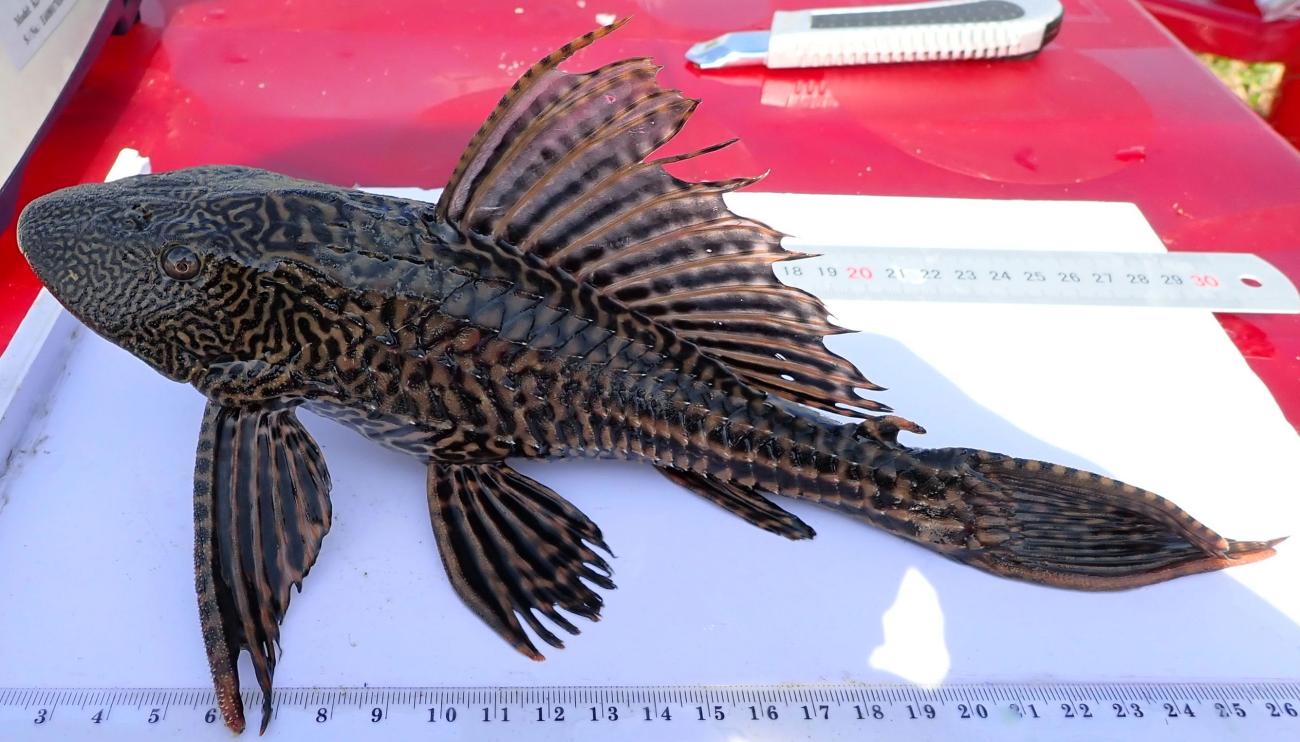
The high plasticity of armoured catfish of the genus Pterygoplichthys contributed to their rapid and large-scale dispersal (invasion) into new water bodies of the Indo-China region. In particular, the high adaptive potential of representatives of the genus is manifested in their behavioral response to unfavorable environmental factors. Employees of the IEE RAS (E.D. Pavlov, E.V. Ganzha) together with a Vietnamese colleague (Tran Duc Dien) assessed the horizontal and vertical distribution of fish and the daily rhythm of their motor activity in freshwater and brackish habitats (Central Vietnam).
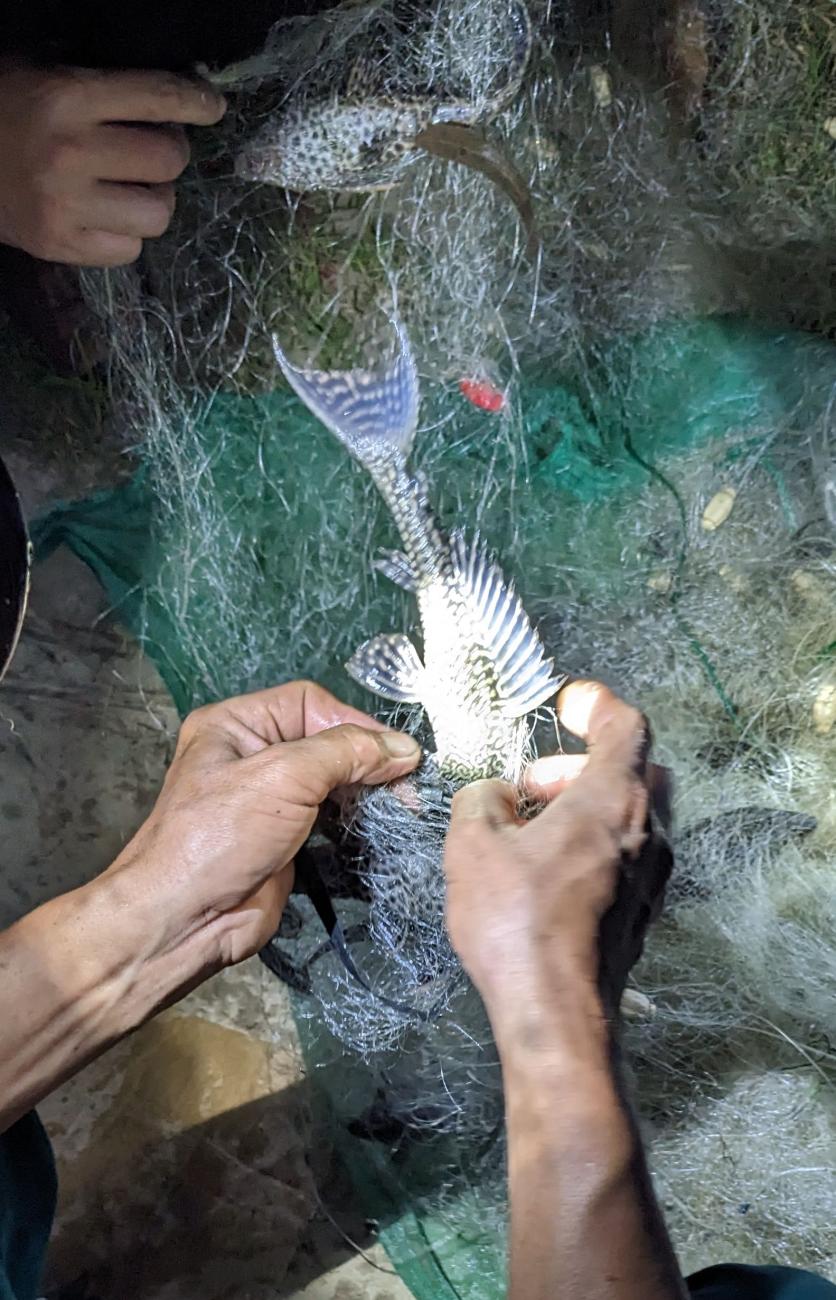
It is believed that armoured catfish predominantly inhabit the bottom layer of the water mass, in part due to their negative buoyancy - their body density is higher than the density of water. However, based on control catches, we established that armoured catfish during periods of increased activity are often found in reservoirs at different water levels from the bottom to the surface.
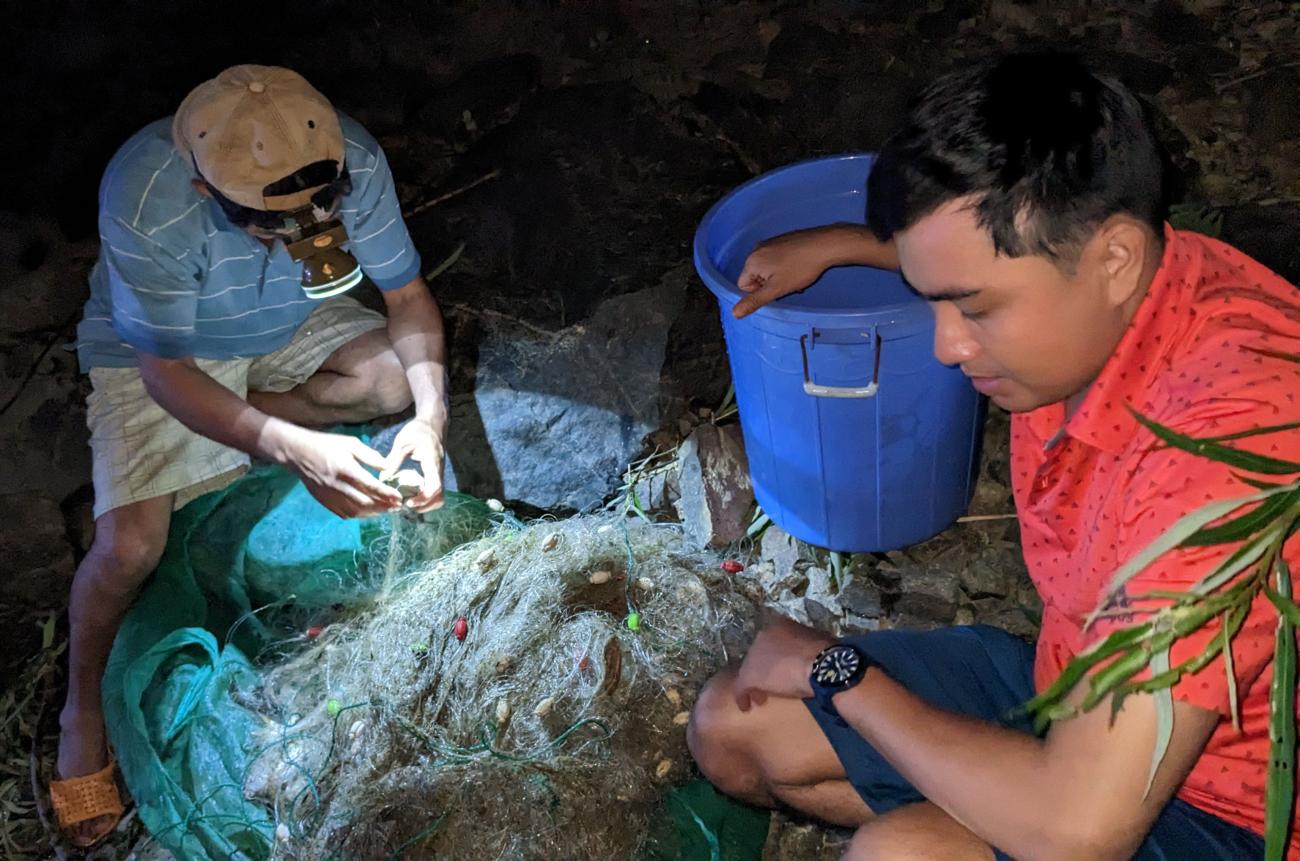
We assume that due to the presence of facultative respiration with atmospheric oxygen (capturing air from the surface of the water and retaining it in the intestines), this species is able to change its buoyancy from negative to positive in the shortest possible time and for a long time. This physiological feature allows armoured catfish to move without significant energy expenditure in the upper layers of water, which, in the conditions of the estuary and coastal zone, are usually more desalinated than the bottom areas.
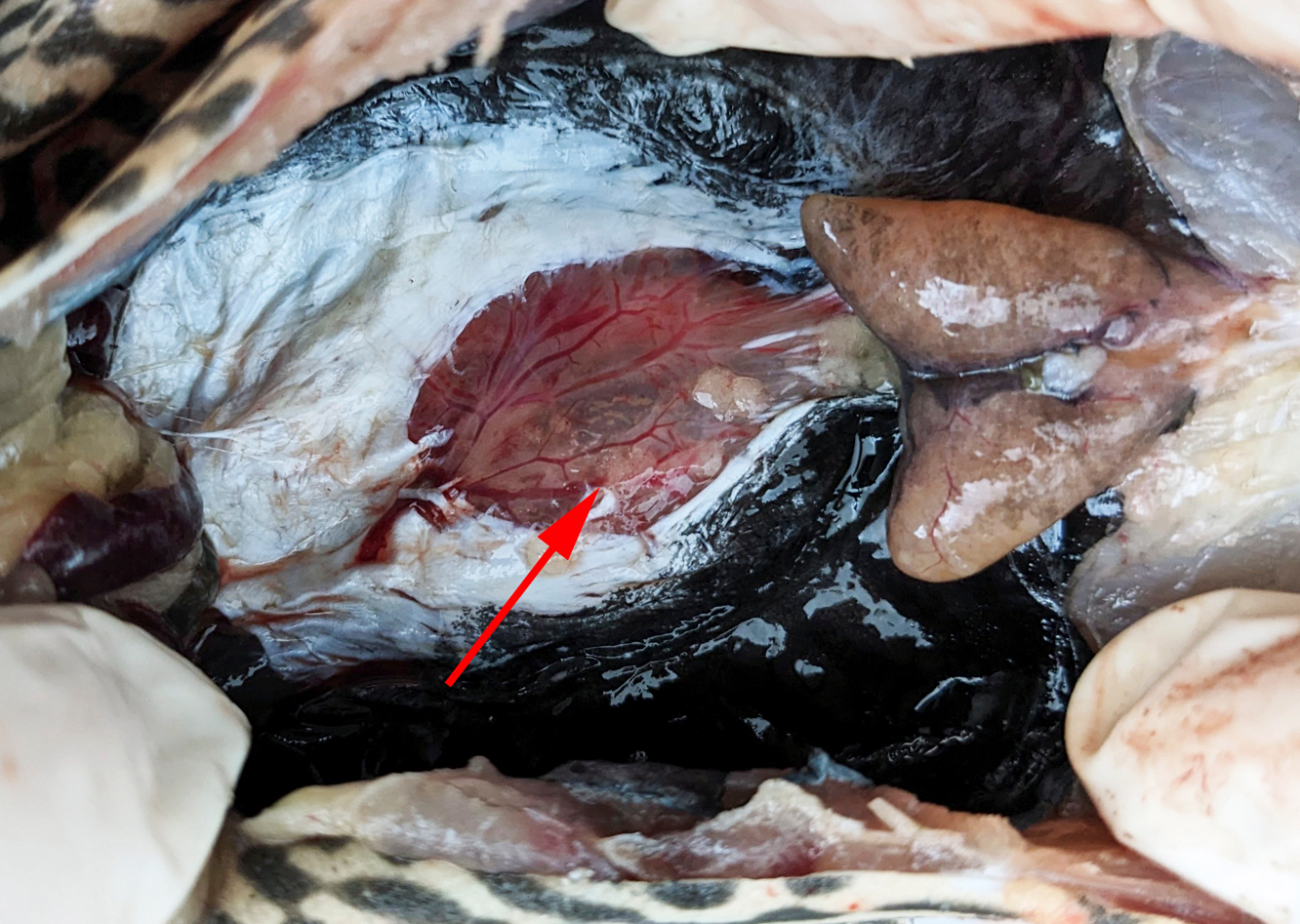
The hourly circadian rhythm of the locomotor activity of armoured catfish caught in water bodies characterized by different hydrology and water salinity was experimentally assessed. It has been shown that armoured catfish are active in the dark with peak activity in the evening (18:00-20:00). Dawn contributes to the rapid attenuation of their activity. Fish from freshwater habitats have a similar circadian rhythm. The circadian rhythm of individuals living in more dynamic estuarine conditions is modified by tidal currents. Thus, the evening peak of physical activity of fish in the estuary occurs 3 hours later (at 21:00), which is synchronized with the beginning of low tide by a decrease in the intrusion of brackish waters. The response of estuarine catfish to the phases of high and low tide indicates their ability to sense increased salinity of water.
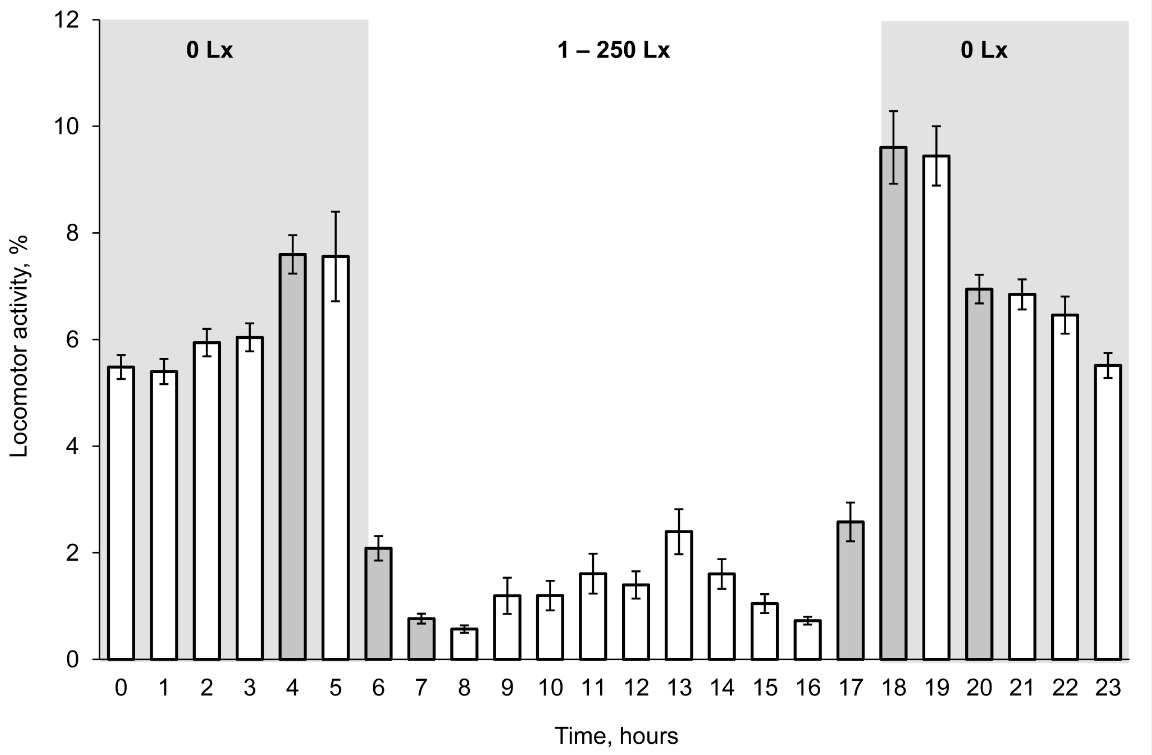
The results of field and experimental studies indicate that alien armoured catfish are capable of penetrating brackish waters (estuaries and, possibly, coastal areas) and through them successfully settling into new bodies of water, thus posing a threat to tropical aquatic ecosystems and native aquatic organisms.
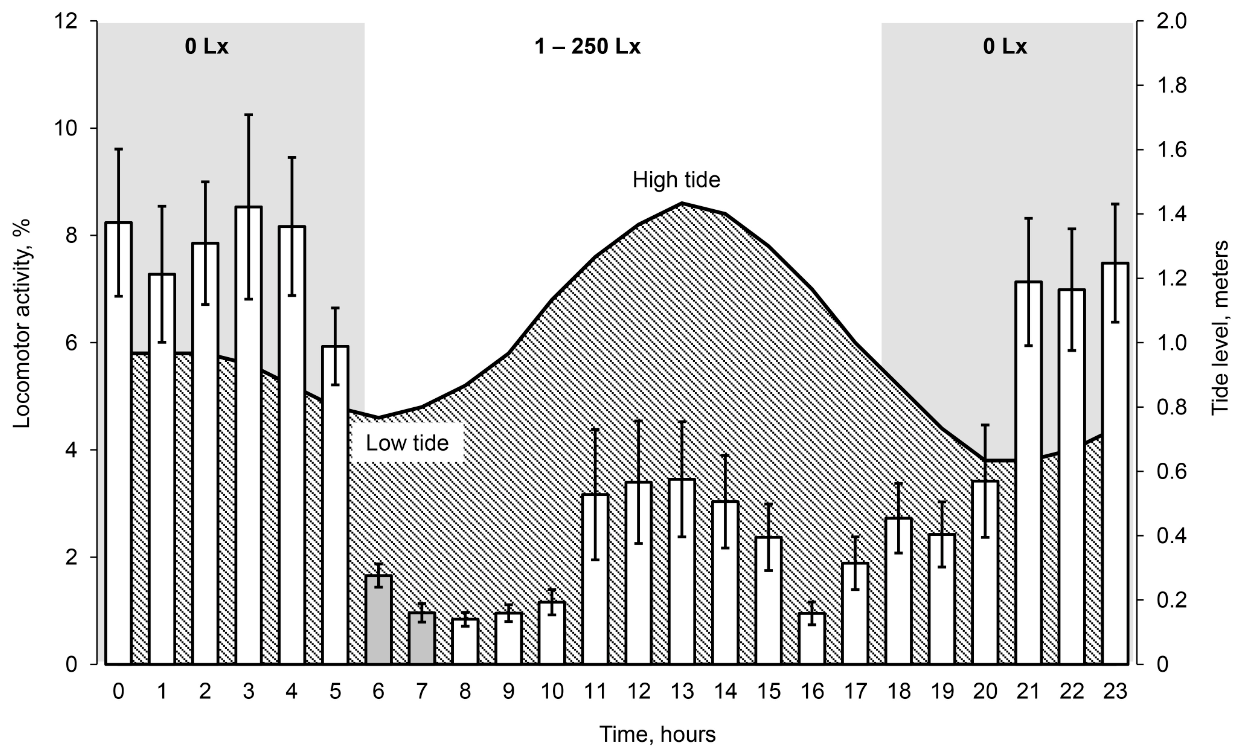
The work was carried out within the framework of the Ecolan 3.2 project in 2023 (Russian-Vietnamese Tropical Center) with financial support from the Russian Ministry of Education and Science. The authors express their gratitude to the Director of the Institute of Ecology and Evolution of the Russian Academy of Sciences, Corresponding Member of the Russian Academy of Sciences S.V. Naidenko for support of research work. The article was published in the journal Q1: PLOS One.
